3rd (United Kingdom) Division on:
[Wikipedia]
[Google]
[Amazon]
The 3rd (United Kingdom) Division is a
 The 3rd Division was also present at the
The 3rd Division was also present at the
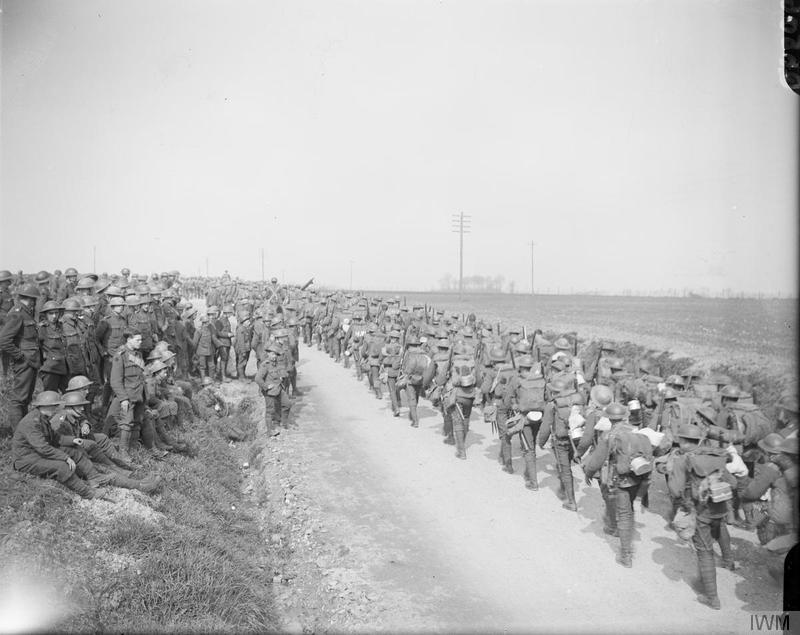 During the
During the
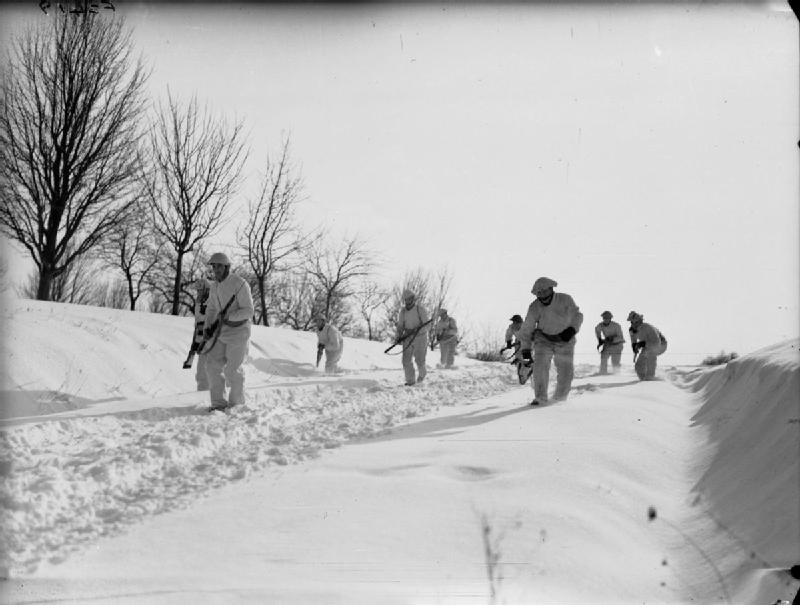 The 3rd Infantry Division, under the command of Major General
The 3rd Infantry Division, under the command of Major General 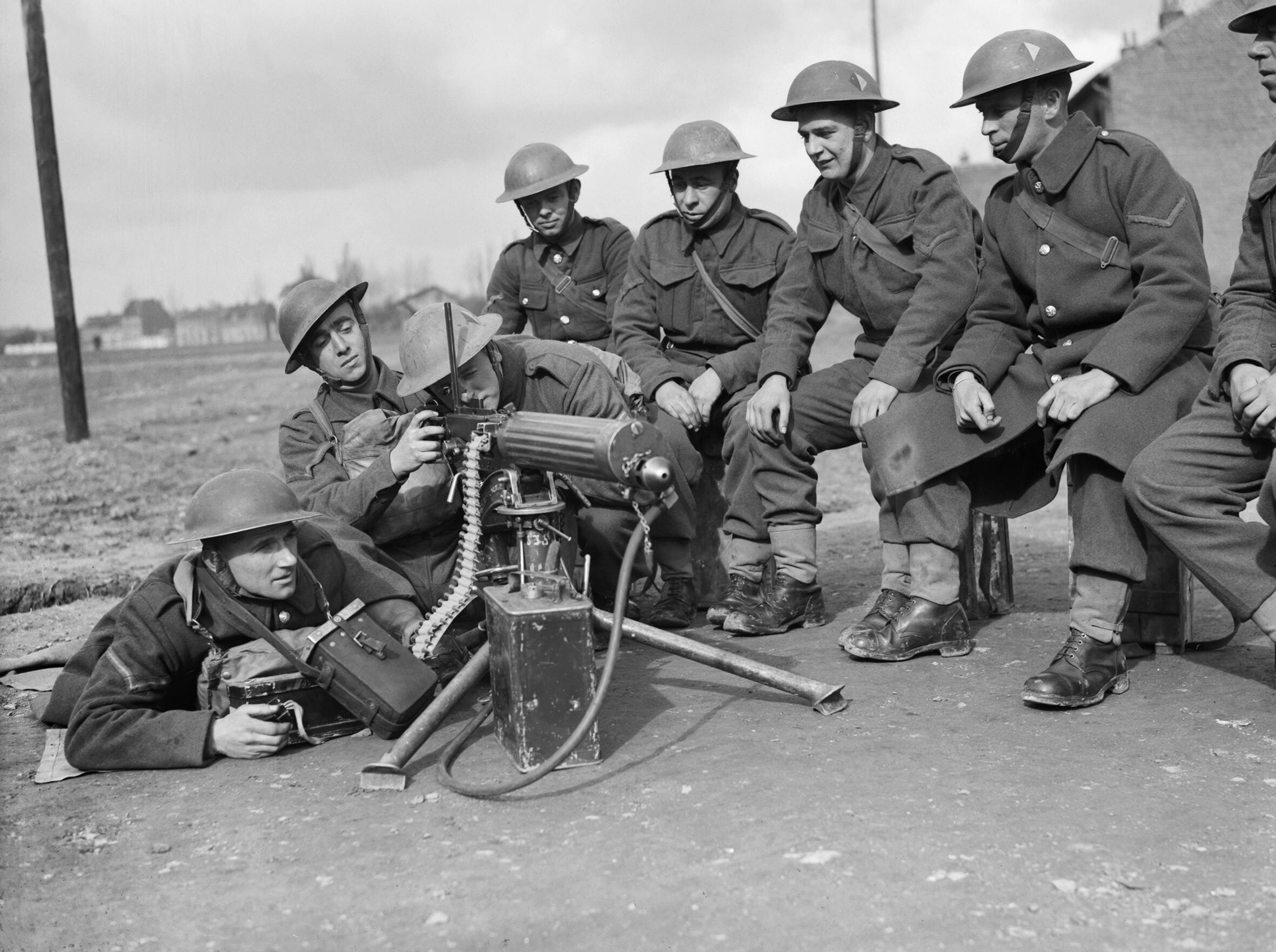 In May 1940, after several months of relative inactivity, the German Army launched its attack in the west which resulted in the BEF being split up from the
In May 1940, after several months of relative inactivity, the German Army launched its attack in the west which resulted in the BEF being split up from the 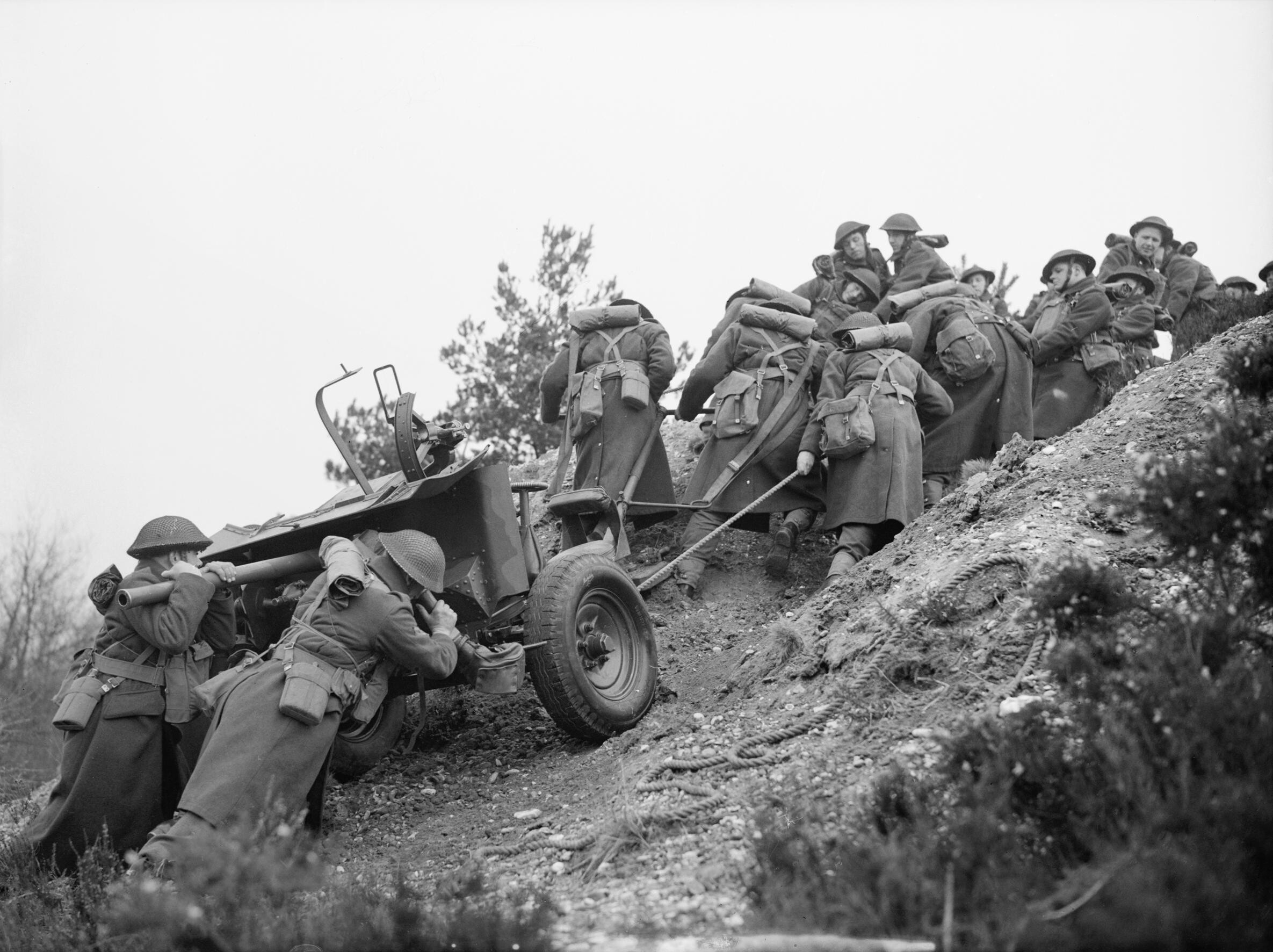 For over a year after Dunkirk the composition of 3rd Division remained largely unchanged (except that the motorcycle battalion was converted into 3rd (RNF) Reconnaissance Regiment, Reconnaissance Corps). Then, in September 1941, the 7th Guards Brigade was transferred to help create the
For over a year after Dunkirk the composition of 3rd Division remained largely unchanged (except that the motorcycle battalion was converted into 3rd (RNF) Reconnaissance Regiment, Reconnaissance Corps). Then, in September 1941, the 7th Guards Brigade was transferred to help create the
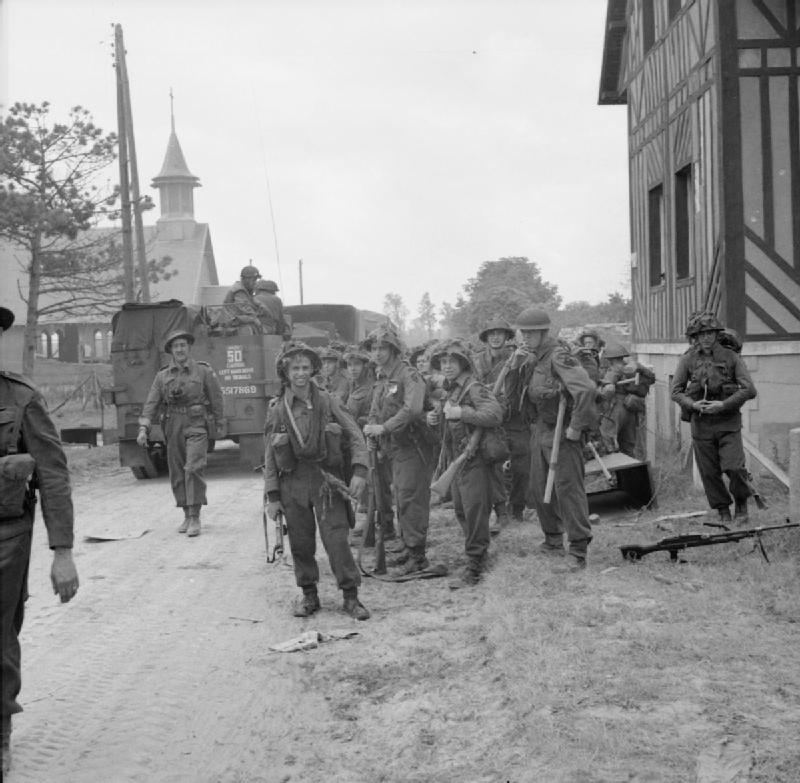 The 3rd British Infantry Division was the first British formation to land at Sword Beach on D-Day, 6 June 1944, as part of the invasion of Normandy, part of the larger
The 3rd British Infantry Division was the first British formation to land at Sword Beach on D-Day, 6 June 1944, as part of the invasion of Normandy, part of the larger
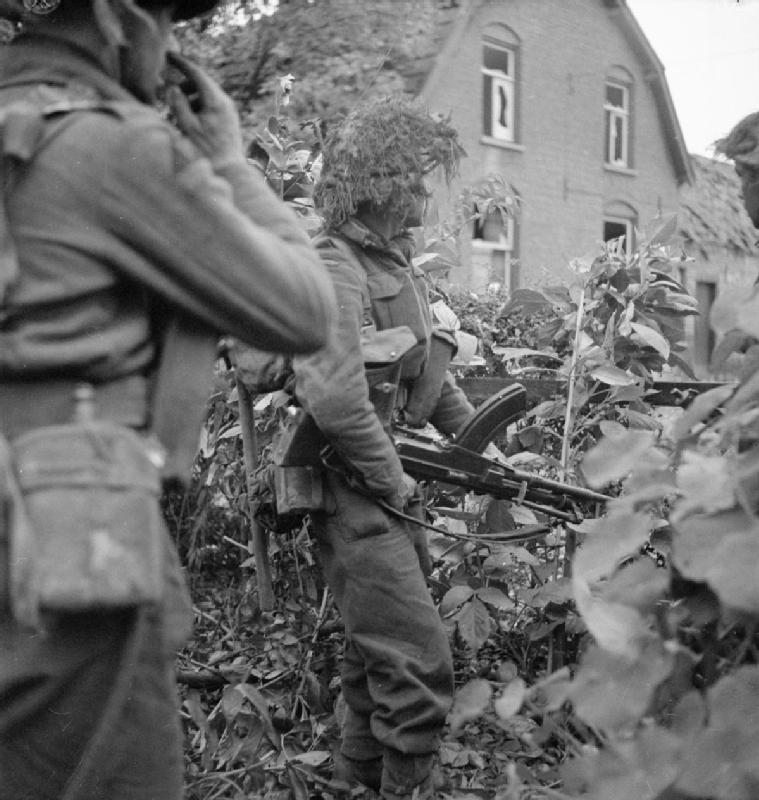 After D-Day the 3rd Infantry Division fought through the Battle for Caen, in Operation Charnwood and Operation Goodwood. With the fighting in Normandy over after the Battle of the Falaise Gap, the division also participated in the
After D-Day the 3rd Infantry Division fought through the Battle for Caen, in Operation Charnwood and Operation Goodwood. With the fighting in Normandy over after the Battle of the Falaise Gap, the division also participated in the
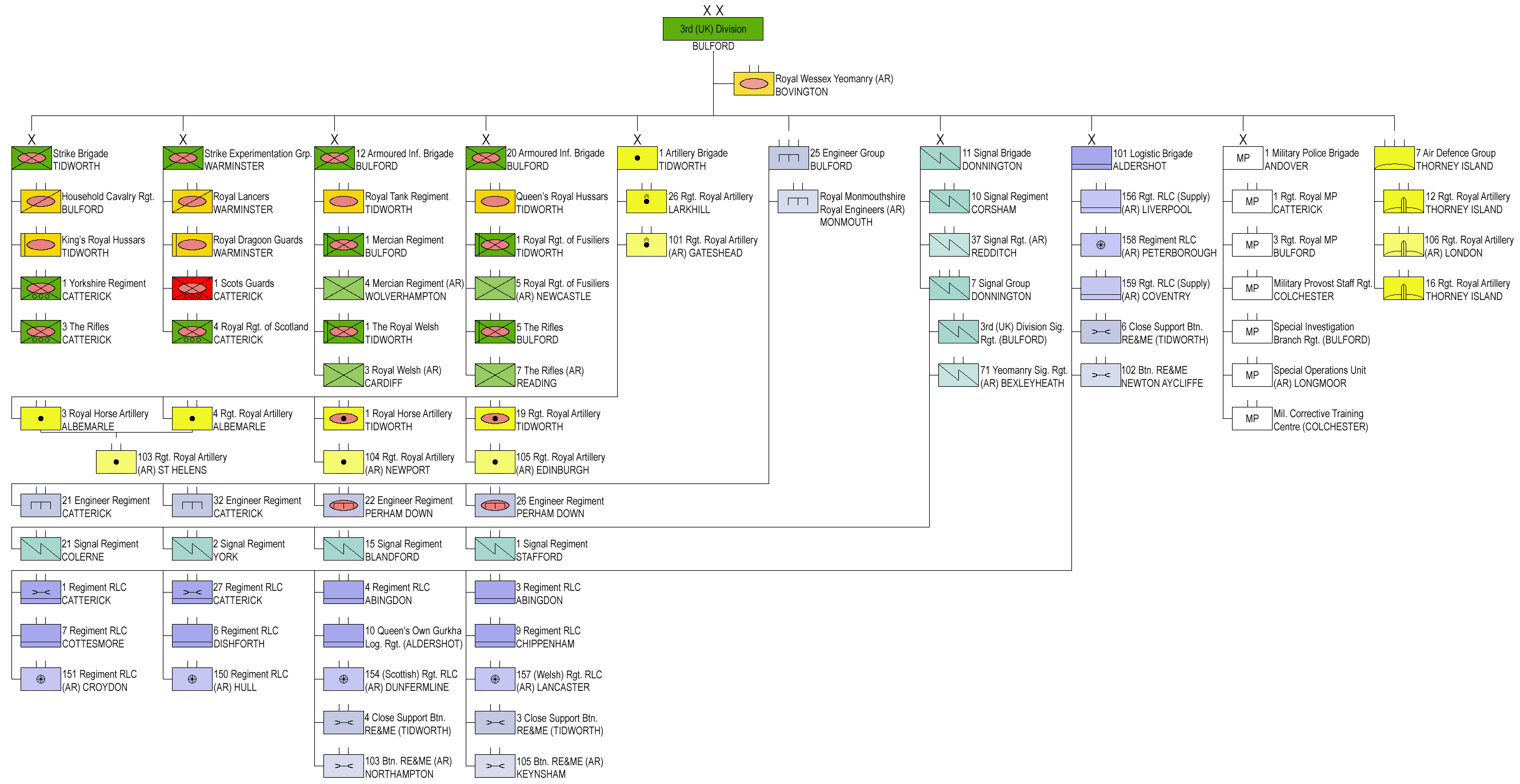 ;3rd (UK) Mechanised Division (1990s)British Army Units
;3rd (UK) Mechanised Division (1990s)British Army Units
/ref> * 1st Mechanized Brigade * 4th Mechanized Brigade * 12th Mechanized Brigade * 3rd Division Headquarters and Signal Regiment * 5 Regiment Army Air Corps (Lynx) * 36 Engineer Regiment, Royal Engineers * 3 Regiment, Royal Military Police * The Royal Wessex Yeomanry ;3rd (United Kingdom) Division (2019–present) *
* indicates a posthumous award
3rd (UK) Division
on British Army official website
British Military History: 3 Division (1930 - 1938)
British Military History: 3 Infantry Division (1939)
British Military History: 3 Infantry Division (1940)
British Military History: 3 Infantry Division (1944-45)
{{DEFAULTSORT:03 Infantry Division Infantry divisions of the British Army in World War I Infantry divisions of the British Army in World War II Military units and formations established in 1809 1809 establishments in the United Kingdom Military units and formations of the United Kingdom in the Peninsular War
regular army
A regular army is the official army of a state or country (the official armed forces), contrasting with irregular forces, such as volunteer irregular militias, private armies, mercenaries, etc. A regular army usually has the following:
* a standi ...
division of the British Army
The British Army is the principal land warfare force of the United Kingdom, a part of the British Armed Forces along with the Royal Navy and the Royal Air Force. , the British Army comprises 79,380 regular full-time personnel, 4,090 Gur ...
. It was created in 1809 by Arthur Wellesley, 1st Duke of Wellington
Arthur Wellesley, 1st Duke of Wellington, (1 May 1769 – 14 September 1852) was an Anglo-Irish people, Anglo-Irish soldier and Tories (British political party), Tory statesman who was one of the leading military and political figures of Uni ...
, as part of the Anglo-Portuguese Army
The Anglo-Portuguese Army was the combined British and Portuguese army that participated in the Peninsular War, under the command of Arthur Wellesley. The Army is also referred to as the British-Portuguese Army and, in Portuguese, as the '' ...
, for service in the Peninsular War
The Peninsular War (1807–1814) was the military conflict fought in the Iberian Peninsula by Spain, Portugal, and the United Kingdom against the invading and occupying forces of the First French Empire during the Napoleonic Wars. In Spai ...
, and was known as the Fighting 3rd under Sir Thomas Picton during the Napoleonic Wars
The Napoleonic Wars (1803–1815) were a series of major global conflicts pitting the French Empire and its allies, led by Napoleon I, against a fluctuating array of European states formed into various coalitions. It produced a period of Fren ...
. The division fought at the Battle of Waterloo
The Battle of Waterloo was fought on Sunday 18 June 1815, near Waterloo (at that time in the United Kingdom of the Netherlands, now in Belgium). A French army under the command of Napoleon was defeated by two of the armies of the Seventh C ...
, as well as during the Crimean War
The Crimean War, , was fought from October 1853 to February 1856 between Russia and an ultimately victorious alliance of the Ottoman Empire, France, the United Kingdom and Piedmont-Sardinia.
Geopolitical causes of the war included t ...
and the Second Boer War
The Second Boer War ( af, Tweede Vryheidsoorlog, , 11 October 189931 May 1902), also known as the Boer War, the Anglo–Boer War, or the South African War, was a conflict fought between the British Empire and the two Boer Republics (the South ...
. As a result of bitter fighting in 1916, during the First World War
World War I (28 July 1914 11 November 1918), often abbreviated as WWI, was one of the deadliest global conflicts in history. Belligerents included much of Europe, the Russian Empire, the United States, and the Ottoman Empire, with fig ...
, the division became referred to as the 3rd (Iron) Division, or the Iron Division or Ironsides. During the Second World War
World War II or the Second World War, often abbreviated as WWII or WW2, was a world war that lasted from 1939 to 1945. It involved the World War II by country, vast majority of the world's countries—including all of the great power ...
, the division (now known as the 3rd Infantry Division) fought in the Battle of France
The Battle of France (french: bataille de France) (10 May – 25 June 1940), also known as the Western Campaign ('), the French Campaign (german: Frankreichfeldzug, ) and the Fall of France, was the Nazi Germany, German invasion of French Third Rep ...
including a rearguard action during the Dunkirk Evacuation
The Dunkirk evacuation, codenamed Operation Dynamo and also known as the Miracle of Dunkirk, or just Dunkirk, was the evacuation of more than 338,000 Allied soldiers during the Second World War from the beaches and harbour of Dunkirk, in the n ...
, and played a prominent role in the D-Day landings of 6 June 1944. The division was to have been part of a proposed Commonwealth Corps, formed for a planned invasion of Japan in 1945–46, and later served in the British Mandate of Palestine. During the Second World War, the insignia became the "pattern of three" — a black triangle trisected by an inverted red triangle, created by Bernard Montgomery to instil pride in his troops.
Napoleonic Wars
The division was part of the Allied British and Portuguese forces that took part in thePeninsular War
The Peninsular War (1807–1814) was the military conflict fought in the Iberian Peninsula by Spain, Portugal, and the United Kingdom against the invading and occupying forces of the First French Empire during the Napoleonic Wars. In Spai ...
. It fought at the Battle of Bussaco in September 1810, the Battle of Fuentes de Oñoro in May 1811 and the Battle of El Bodón in September 1811, before further combat at the Siege of Ciudad Rodrigo in January 1812, the Siege of Badajoz in March 1812 and the Battle of Salamanca
The Battle of Salamanca (in French and Spanish known as the Battle of Arapiles) on 22July 1812 was a battle in which an Anglo-Portuguese army under the Earl of Wellington defeated Marshal Auguste Marmont's French forces at Arapiles, so ...
in July 1812. It also fought at the Siege of Burgos in September 1812 and the Battle of Vitoria in June 1813.Cannon, p. 81 It then pursued the French army into France and saw action at the Battle of the Pyrenees in July 1813, the Battle of Nivelle
The Battle of Nivelle (10 November 1813) took place in front of the river Nivelle near the end of the Peninsular War (1808–1814). After the Allied siege of San Sebastian, Wellington's 80,000 British, Portuguese and Spanish troops (20, ...
in November 1813 and the Battle of the Nive
The Battles of the Nive (9–13 December 1813) were fought towards the end of the Peninsular War. Arthur Wellesley, Marquess of Wellington's Anglo-Portuguese and Spanish army defeated Marshal Nicolas Soult's French army on French soil ...
in December 1813. After that it fought at the Battle of Orthez
The Battle of Orthez (27 February 1814) saw the Anglo-Spanish-Portuguese Army under Field Marshal Arthur Wellesley, Marquess of Wellington attack an Imperial French army led by Marshal Nicolas Soult in southern France. The outnumbered F ...
in February 1814 and the Battle of Toulouse in April 1814.
According to Picton, the fighting by the 3rd was so intense at the Battle of Vitoria, that the division lost 1,800 men (over one third of all Allied losses at the battle) having taken a key bridge and village, where they were subjected to fire by 40 to 50 cannons
A cannon is a large-caliber gun classified as a type of artillery, which usually launches a projectile using explosive chemical propellant. Gunpowder ("black powder") was the primary propellant before the invention of smokeless powder during ...
, and a counter-attack on the right flank (which was open because the rest of the army had not kept pace). The 3rd held their ground and pushed on with other divisions to capture the village of Arinez.
Battle of Quatre Bras
The Battle of Quatre Bras was fought on 16 June 1815, as a preliminary engagement to the decisive Battle of Waterloo that occurred two days later. The battle took place near the strategic crossroads of Quatre Bras and was contested between e ...
and the Battle of Waterloo
The Battle of Waterloo was fought on Sunday 18 June 1815, near Waterloo (at that time in the United Kingdom of the Netherlands, now in Belgium). A French army under the command of Napoleon was defeated by two of the armies of the Seventh C ...
in the Waterloo campaign under the command of Lieutenant-General Sir Charles Alten
Field Marshal Sir Charles (Carl) August von Alten (21 October 1764 – 20 April 1840) was a Hanoverian and British soldier who led the famous Light Division during the last two years of the Peninsular War. At the Battle of Waterloo, he comm ...
K.C.B. (Count Carl von Alten).
Crimean War
The 3rd Division took part in theCrimean War
The Crimean War, , was fought from October 1853 to February 1856 between Russia and an ultimately victorious alliance of the Ottoman Empire, France, the United Kingdom and Piedmont-Sardinia.
Geopolitical causes of the war included t ...
and fought in the Battle of Alma
The Battle of the Alma (short for Battle of the Alma River) was a battle in the Crimean War between an allied expeditionary force (made up of French, British, and Ottoman forces) and Russian forces defending the Crimean Peninsula on 20Septem ...
and the Siege of Sevastopol. It was under the command of Lieutenant-General Sir Richard England.
Second Boer War
During theSecond Boer War
The Second Boer War ( af, Tweede Vryheidsoorlog, , 11 October 189931 May 1902), also known as the Boer War, the Anglo–Boer War, or the South African War, was a conflict fought between the British Empire and the two Boer Republics (the South ...
(1899–1902) the division began under the command of General Gatacre. In 1902 the army was restructured, and a 3rd Infantry division was established permanently at Bordon as part of the 1st Army Corps, comprising the 5th
Fifth is the ordinal form of the number five.
Fifth or The Fifth may refer to:
* Fifth Amendment to the United States Constitution, as in the expression "pleading the Fifth"
* Fifth column, a political term
* Fifth disease, a contagious rash tha ...
and 6th
6 (six) is the natural number following 5 and preceding 7. It is a composite number and the smallest perfect number.
In mathematics
Six is the smallest positive integer which is neither a square number nor a prime number; it is the second small ...
Infantry Brigades.
First World War
 During the
During the First World War
World War I (28 July 1914 11 November 1918), often abbreviated as WWI, was one of the deadliest global conflicts in history. Belligerents included much of Europe, the Russian Empire, the United States, and the Ottoman Empire, with fig ...
the 3rd Division was a permanently established Regular Army
A regular army is the official army of a state or country (the official armed forces), contrasting with irregular forces, such as volunteer irregular militias, private armies, mercenaries, etc. A regular army usually has the following:
* a standi ...
division that was amongst the first to be sent to France at the outbreak of the war as part of the British Expeditionary Force (BEF). The 3rd Division served on the Western Front Western Front or West Front may refer to:
Military frontiers
*Western Front (World War I), a military frontier to the west of Germany
*Western Front (World War II), a military frontier to the west of Germany
*Western Front (Russian Empire), a majo ...
in France and Belgium for four years, from 1914 to 1918. During this time, it was nicknamed "The Iron Division". Its first commander during the war, Major-General
Major general (abbreviated MG, maj. gen. and similar) is a military rank used in many countries. It is derived from the older rank of sergeant major general. The disappearance of the "sergeant" in the title explains the apparent confusion of a ...
Hubert Hamilton, was killed by shellfire near Béthune in October 1914. The division served in many major battles of the war, including the Battle of Mons and the subsequent Great Retreat
The Great Retreat (), also known as the retreat from Mons, was the long withdrawal to the River Marne in August and September 1914 by the British Expeditionary Force (BEF) and the French Fifth Army. The Franco-British forces on the Western Fro ...
, and later the First Battle of Ypres.
Inter-War Period
After the end of the First World War, the division was stationed in southern England where it formed part of Southern Command. In 1937, one of its brigades, the 9th Infantry Brigade, was commanded byBrigadier
Brigadier is a military rank, the seniority of which depends on the country. In some countries, it is a senior rank above colonel, equivalent to a brigadier general or commodore, typically commanding a brigade of several thousand soldiers. In ...
Bernard Montgomery
Field Marshal Bernard Law Montgomery, 1st Viscount Montgomery of Alamein, (; 17 November 1887 – 24 March 1976), nicknamed "Monty", was a senior British Army officer who served in the First World War, the Irish War of Independence and ...
. He assumed command of the 3rd Division shortly before Britain declared war on Germany
Germany, officially the Federal Republic of Germany (FRG),, is a country in Central Europe. It is the most populous member state of the European Union. Germany lies between the Baltic and North Sea to the north and the Alps to the sou ...
in September 1939.
Second World War
 The 3rd Infantry Division, under the command of Major General
The 3rd Infantry Division, under the command of Major General Bernard Montgomery
Field Marshal Bernard Law Montgomery, 1st Viscount Montgomery of Alamein, (; 17 November 1887 – 24 March 1976), nicknamed "Monty", was a senior British Army officer who served in the First World War, the Irish War of Independence and ...
, was sent overseas to France in late September 1939, just under a month after the outbreak of the Second World War
World War II or the Second World War, often abbreviated as WWII or WW2, was a world war that lasted from 1939 to 1945. It involved the World War II by country, vast majority of the world's countries—including all of the great power ...
.Joslen, p. 43-44 There the division became part of Lieutenant General
Lieutenant general (Lt Gen, LTG and similar) is a three-star military rank (NATO code OF-8) used in many countries. The rank traces its origins to the Middle Ages, where the title of lieutenant general was held by the second-in-command on the ...
Alan Brooke's II Corps of the British Expeditionary Force (BEF). However, unlike in the First World War, where the division was almost immediately engaged in desperate fighting, there was no action. Montgomery instantly began training the men of his division in a tough training regime. As with most of the rest of the BEF, training was severely hampered by a shortage of modern equipment.
 In May 1940, after several months of relative inactivity, the German Army launched its attack in the west which resulted in the BEF being split up from the
In May 1940, after several months of relative inactivity, the German Army launched its attack in the west which resulted in the BEF being split up from the French Army
The French Army, officially known as the Land Army (french: Armée de Terre, ), is the land-based and largest component of the French Armed Forces. It is responsible to the Government of France, along with the other components of the Armed Force ...
, evacuated from Dunkirk. Due to Montgomery's strict training regime, the 3rd Division suffered comparatively few casualties and earned a reputation as one of the best British divisions in France. During the evacuation Montgomery was promoted to temporary command of II Corps and Brigadier
Brigadier is a military rank, the seniority of which depends on the country. In some countries, it is a senior rank above colonel, equivalent to a brigadier general or commodore, typically commanding a brigade of several thousand soldiers. In ...
Kenneth Anderson took temporary control of the division before, in July, Major General James Gammell assumed command.
 For over a year after Dunkirk the composition of 3rd Division remained largely unchanged (except that the motorcycle battalion was converted into 3rd (RNF) Reconnaissance Regiment, Reconnaissance Corps). Then, in September 1941, the 7th Guards Brigade was transferred to help create the
For over a year after Dunkirk the composition of 3rd Division remained largely unchanged (except that the motorcycle battalion was converted into 3rd (RNF) Reconnaissance Regiment, Reconnaissance Corps). Then, in September 1941, the 7th Guards Brigade was transferred to help create the Guards Armoured Division
The Guards Armoured Division was an armoured division of the British Army during the Second World War. The division was created in the United Kingdom on 17 June 1941 during the Second World War from elements of the Guards units, the Grenadier ...
, and, in November, the 37th Infantry Brigade Group joined the 3rd Division and was renumbered 7th Brigade with the following composition:Joslen, pp. 43–4. The brigade anti-tank companies were disbanded during 1941 and 92nd (Loyals) Light Anti-Aircraft Regiment, Royal Artillery, formerly the 7th Battalion, Loyal Regiment (North Lancashire), joined the division in March 1942. In June 1942, 3rd Infantry Division was reorganised as a 'Mixed' Division, with 33rd Tank Brigade replacing 7th Infantry Brigade. By early 1943, the experiment with 'mixed' divisions was abandoned, and division reverted to being an infantry formation, 33rd Tank Brigade being replaced by 185th Infantry Brigade 185th may refer to:
*185th (2/1st West Riding) Brigade, formation of the Territorial Force of the British Army
*185th Air Refueling Squadron flies the KC-135 Stratotanker
*185th Air Refueling Wing (ARW), unit located at Sioux Gateway Airport, Iowa
...
.
D-Day
 The 3rd British Infantry Division was the first British formation to land at Sword Beach on D-Day, 6 June 1944, as part of the invasion of Normandy, part of the larger
The 3rd British Infantry Division was the first British formation to land at Sword Beach on D-Day, 6 June 1944, as part of the invasion of Normandy, part of the larger Operation Overlord
Operation Overlord was the codename for the Battle of Normandy, the Allied operation that launched the successful invasion of German-occupied Western Europe during World War II. The operation was launched on 6 June 1944 (D-Day) with the Norm ...
. For the assault landing, 3rd British Division was organised as a Division Group, with other formations temporarily under its command. These included 27th Armoured Brigade
The 27th Armoured Brigade was an armoured brigade of the British Army that served in the Second World War and played a crucial role in the Normandy landings on 6 June 1944 and the following Battle of Normandy until disbandment in late 1944.
Orig ...
( Sherman DD amphibious tanks) and 22nd Dragoons
The 22nd Dragoons was the title held by five separate Cavalry regiments of the British Army raised and disbanded between 1716 and 1945. The last regiment of this name existed during the Second World War, from 1 December 1940 until 30 November ...
( Sherman Crab flail tanks), 1st Special Service Brigade
The 1st Special Service Brigade was a commando brigade of the British Army. Formed during the Second World War, it consisted of elements of the British Army (including British Commandos) and the Royal Marines. The brigade's component units saw a ...
and No. 41 (Royal Marine) Commando, 5th Royal Marine Independent Armoured Support Battery (Centaur IV
A centaur ( ; grc, κένταυρος, kéntauros; ), or occasionally hippocentaur, is a creature from Greek mythology with the upper body of a human and the lower body and legs of a horse.
Centaurs are thought of in many Greek myths as being ...
close support tanks), 77 and 79 Assault Squadrons of 5th Assault Regiment, Royal Engineers ( Churchill AVREs).
The division's own artillery were all self-propelled (field regiments: M7 Priest; anti-tank regiment: M10 tank destroyer) and the SP field guns and RM Centaurs were able to fire from their landing craft during the run-in to the beach. In addition, 3rd British Division had 101 Beach Sub-Area HQ and Nos 5 and 6 Beach groups
During the Second World War, the Allies realised the need for the landing zone of an amphibious assault to be organised for the efficient passage of follow on forces. The British formed such units from all three services – the Royal Navy (Command ...
under command for the assault phase: these included additional engineers, transport, pioneers, medical services and vehicle recovery sections.Ellis, pp. 173, 184–6.
The 3rd Division's brigades were organised as brigade groups for the assault, with 8 Brigade Group making the first landing, followed by 185 Brigade Group and 9 Brigade Group in succession during the morning and early afternoon.
After D-Day
 After D-Day the 3rd Infantry Division fought through the Battle for Caen, in Operation Charnwood and Operation Goodwood. With the fighting in Normandy over after the Battle of the Falaise Gap, the division also participated in the
After D-Day the 3rd Infantry Division fought through the Battle for Caen, in Operation Charnwood and Operation Goodwood. With the fighting in Normandy over after the Battle of the Falaise Gap, the division also participated in the Allied advance from Paris to the Rhine
The Allied advance from Paris to the Rhine, also known as the Siegfried Line campaign, was a phase in the Western European campaign of World War II.
This phase spans from the end of the Battle of Normandy, or Operation Overlord, (25 August 19 ...
and fought in the Netherlands
)
, anthem = ( en, "William of Nassau")
, image_map =
, map_caption =
, subdivision_type = Sovereign state
, subdivision_name = Kingdom of the Netherlands
, established_title = Before independence
, established_date = Spanish Netherl ...
and Belgium
Belgium, ; french: Belgique ; german: Belgien officially the Kingdom of Belgium, is a country in Northwestern Europe. The country is bordered by the Netherlands to the north, Germany to the east, Luxembourg to the southeast, France to ...
and later the Allied invasion of Germany
The Western Allied invasion of Germany was coordinated by the Allies of World War II, Western Allies during the final months of hostilities in the European theatre of World War II, European theatre of World War II. In preparation for the Allied ...
. For the campaign in Normandy, the division was commanded by Major-General
Major general (abbreviated MG, maj. gen. and similar) is a military rank used in many countries. It is derived from the older rank of sergeant major general. The disappearance of the "sergeant" in the title explains the apparent confusion of a ...
Tom Rennie until he was wounded on 13 June 1944; Major-General 'Bolo' Whistler, a highly popular commander, took command on 23 June 1944. During the campaign in Normandy, the division won its first Victoria Cross
The Victoria Cross (VC) is the highest and most prestigious award of the British honours system. It is awarded for valour "in the presence of the enemy" to members of the British Armed Forces and may be awarded posthumously. It was previously ...
of the Second World War, awarded in August 1944 to Corporal
Corporal is a military rank in use in some form by many militaries and by some police forces or other uniformed organizations. The word is derived from the medieval Italian phrase ("head of a body"). The rank is usually the lowest ranking non- ...
Sidney Bates of 1st Battalion, Royal Norfolk Regiment, part of the 185th Brigade. Private James Stokes of the 2nd Battalion, King's Shropshire Light Infantry, also of the 185th Brigade, was the second recipient awarded the Victoria Cross in March 1945.
During the often intense fighting from Sword Beach to Bremen, the 3rd Division suffered 2,586 killed with over 12,000 wounded.
Cold War
Postwar, the division was reformed on 1 April 1951, in the Suez Canal Zone, under the command of Sir Hugh Stockwell. The division became part of Middle East Land Forces. It consisted of three recently reraised brigades, the 32nd Guards, the 19th Infantry, and the 39th Infantry. It served in the UK for many years and was part of Army Strategic Command in 1968. It had elements of 5th, 19th, and 24th Brigades attached to it. During the 1970s the division consisted of two "square" brigades, the 6th Armoured Brigade and 33rd Armoured Brigade. It became 3rd Armoured Division in 1976 and served withI (BR) Corps
I Corps ("First Corps") was an army corps in existence as an active formation in the British Army for most of the 80 years from its creation in the First World War until the end of the Cold War, longer than any other corps. It had a short-liv ...
being based at St Sebastian Barracks in Soest near the Möhne Dam from 1977. After being briefly reorganised into two "task forces" ("Echo" and "Foxtrot") in the late 1970s, it consisted of the 4th Armoured Brigade, the 6th Airmobile Brigade and the 19th Infantry Brigade in the 1980s.
Post–Cold War
In September 1992, the headquarters of 3rd Armoured Division was relocated from Germany to Bulford, Wiltshire in the UK, where it became 3rd Mechanised Division. It provided the headquarters for Multi-National Division (South-West) inBosnia-Herzegovina
Bosnia and Herzegovina ( sh, / , ), abbreviated BiH () or B&H, sometimes called Bosnia–Herzegovina and often known informally as Bosnia, is a country at the crossroads of south and southeast Europe, located in the Balkans. Bosnia and H ...
in 1995 / 1996 and again in 1998. In early 2002, the division headquarters and its GOC, Major General John McColl, formed the initial basis of the headquarters of the International Security Assistance Force
The International Security Assistance Force (ISAF) was a multinational military mission in Afghanistan from 2001 to 2014. It was established by United Nations Security Council United Nations Security Council Resolution 1386, Resolution 1386 pursua ...
in Kabul, Afghanistan.
On 1 September 1999 the division was freed from its administrative and regional responsibilities and became a deployable or "fly-away" division. As 3rd (UK) Mechanised Division it was the only division at continual operational readiness in the United Kingdom (the other at operational readiness being 1st (UK) Armoured Division
The 1st (United Kingdom) Division, formerly known as the 1st (United Kingdom) Armoured Division and the 1st Division, is a division of the British Army.
Divisional history (1809–1959)
The 1st Division was formed following the disbandment of ...
in Germany). It was based at Picton Barracks, Bulford Camp, and reported to the Commander Land Forces
Commander-in-Chief, Land Forces (CINCLAND), was a senior officer in the British Army. CINCLAND commanded HQ Land Forces, an administrative apparatus that had responsibility for all of the army's fighting units in the United Kingdom (excluding Nort ...
at Andover.
On 11 July 2003, the division deployed to Iraq to replace the British 1st Armoured Division, signalling the start of Operation Telic II. The 3rd Division also controlled numerous other coalition forces in southeast Iraq, including contingents from the Czech Republic, Denmark, Italy, Lithuania, the Netherlands, New Zealand and Norway.
Under Army 2020, the division was renamed as 3rd (United Kingdom) Division and continued to be based at Bulford Camp and to command the Reaction Force. In 2015, Brigadier General Mike Tarsa of the United States Army
The United States Army (USA) is the land warfare, land military branch, service branch of the United States Armed Forces. It is one of the eight Uniformed services of the United States, U.S. uniformed services, and is designated as the Army o ...
was assigned as deputy commanding general of the division. He was replaced in May 2016 by Brigadier General Doug Crissman. Crissman was replaced by Brigadier General Matthew J. Van Wagenen in April 2018. This was part of a growing practice for senior officers of the British Army and the United States Army to be assigned as deputy commanders (and effectively liaison officers) in each other's operational units.
Future
Under the Future Soldier programme, the division will be re-structured with the 1st Armoured Infantry Brigade becoming the '' Deep Reconnaissance Strike Brigade Combat Team'', the 12th Armoured Infantry Brigade becoming ''12th Armoured Brigade Combat Team'', 20th Armoured Infantry Brigade becoming ''20th Armoured Brigade Combat Team'', 11th Signal Brigade reduced to just 7th Signals Group, and 1st Artillery Brigade disbanding.Order of battle
 ;3rd (UK) Mechanised Division (1990s)British Army Units
;3rd (UK) Mechanised Division (1990s)British Army Units/ref> * 1st Mechanized Brigade * 4th Mechanized Brigade * 12th Mechanized Brigade * 3rd Division Headquarters and Signal Regiment * 5 Regiment Army Air Corps (Lynx) * 36 Engineer Regiment, Royal Engineers * 3 Regiment, Royal Military Police * The Royal Wessex Yeomanry ;3rd (United Kingdom) Division (2019–present) *
1st Armoured Infantry Brigade
The 1st Armoured Infantry Brigade was an infantry brigade of the British Army with a long history including service during both the First and the Second World Wars. It was based at Tidworth Camp. Previously, it has been designated 1st (Guards ...
* 12th Armoured Infantry Brigade
The 12th Armoured Brigade Combat team, formerly the 12th Armoured Infantry Brigade, is a regular brigade of the British Army which has been in almost continuous existence since 1899 and now forms part of 3rd (United Kingdom) Division.
History Se ...
* 20th Armoured Infantry Brigade
The 20th Armoured Brigade Combat Team, previously the 20th Armoured Infantry Brigade, is an armoured infantry brigade formation of the British Army, currently headquartered at Wing Barracks, Bulford, Wiltshire, as part of the 3rd (United Kingdo ...
* 101 Logistic Brigade
* 1st Artillery Brigade
* 11th Signal Brigade
11 (eleven) is the natural number following 10 and preceding 12. It is the first repdigit. In English, it is the smallest positive integer whose name has three syllables.
Name
"Eleven" derives from the Old English ', which is first attested i ...
* 1st Military Police Brigade
The 1st Military Police Brigade (1 MP Bde) is a policing formation of the British Army, which is the only one-star command of the Royal Military Police. The brigade was formed in 2014, but due to be reduced to a Colonel's command in 2022 and re ...
-tactical command
* 7 Air Defence Group
* 25 (Close Support) Engineer Group
Recipients of the Victoria Cross
See also
* List of commanders of the British 3rd Division * List of British divisions in World War I * List of British divisions in World War II *British Army Order of Battle (September 1939)
In September 1939, the British Army was in process of expanding their anti-aircraft and mobile (including armoured) assets. Among these new changes was the formation of Anti-Aircraft Command which was formed on 1 April 1939, and the 1st Armoured ...
* Units of the Royal Corps of Signals
* Death of Baha Mousa
Notes
Footnotes CitationsReferences
* * Blaxland, Gregory (1971) ''The Regiments Depart: A History of the British Army 1945–70'', London: William Kimber. * *Chappel M., (1986) ''British Battle Insignia (1). 1914–18'' Osprey Publishing * * Delaforce, Patrick (1995) ''Monty's Iron Sides'', Stroud: Alan Sutton, , * Ellis, Major L.F. (2004) ''History of the Second World War: United Kingdom Military Series: Victory in the West'', Volume I: ''The Battle of Normandy'', London: HMSO, 1962/Uckfield: Naval & Military, . * * Horrocks, Lt-Gen Sir Brian, (1960) ''A Full Life'', London: Collins. * *Keegan, John
Sir John Desmond Patrick Keegan (15 May 1934 – 2 August 2012) was an English military historian, lecturer, author and journalist. He wrote many published works on the nature of combat between prehistory and the 21st century, covering land, ...
(1991), ''Churchill's Generals'', London: Weidenfeld & Nicolson.
* Montgomery, Field Marshal Viscount, (1958) ''Memoirs'', London: Collins.
*
* Scarfe, Norman (2006) 947 Assault Division: A History of the 3rd Division from the Invasion of Normandy to the Surrender of Germany. Stroud, Gloucestershire: Spellmount. .
External links
3rd (UK) Division
on British Army official website
British Military History: 3 Division (1930 - 1938)
British Military History: 3 Infantry Division (1939)
British Military History: 3 Infantry Division (1940)
British Military History: 3 Infantry Division (1944-45)
{{DEFAULTSORT:03 Infantry Division Infantry divisions of the British Army in World War I Infantry divisions of the British Army in World War II Military units and formations established in 1809 1809 establishments in the United Kingdom Military units and formations of the United Kingdom in the Peninsular War